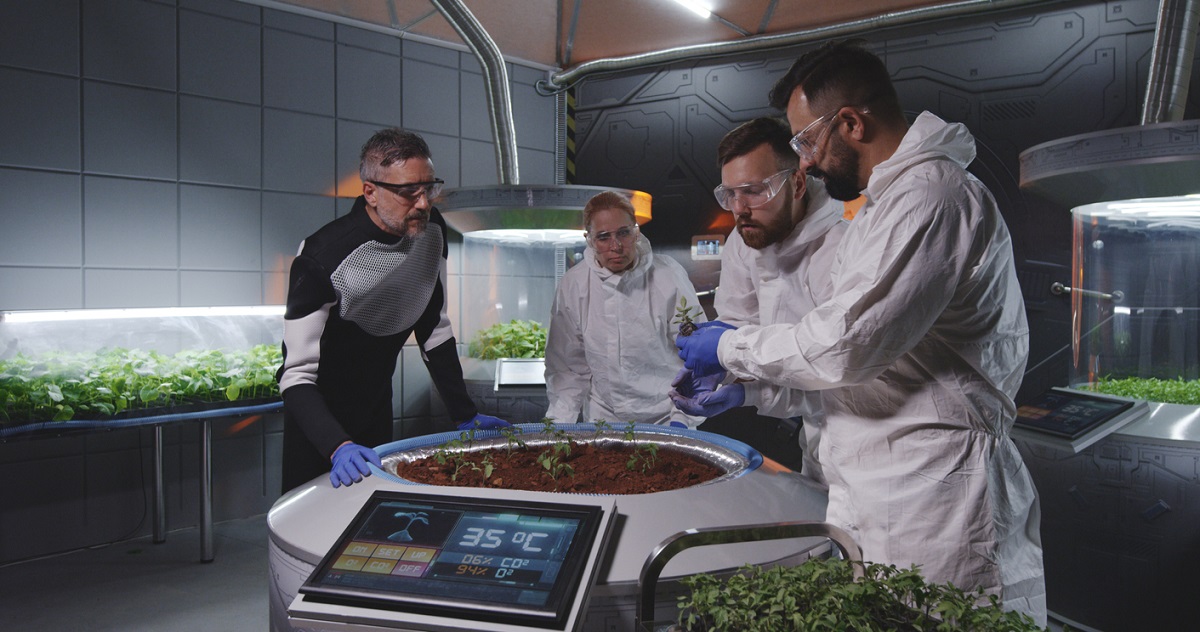
Scientists Identify Biotech Techniques to Improve Space Agriculture
October 20, 2021| |
The Whole-Body Edible and Elite Plant (WBEEP) strategy was proposed by Chinese scientists for space crop improvement and help establish efficient space farming that is essential for humans to survive in space. The strategy involves several plant biotechnology techniques that include biofortification, increased yield, and enhancement of nutrient use by the plant.
WBEEP relies on plant biotechnology to develop crops with more edible parts, richer nutrient content, higher yields and higher mineral nutrient use efficiencies to enhance space farm production and management. The scientists initially proposed the strategy using the potato because of its simple horticultural and food processing requirements as well as its ability to develop normally during space flight. The crop can also be easily reproduced asexually.
The scientists made the following recommendations:
- Introduction of solanine metabolism genes from the tomato to the potato to reduce solanine accumulation in the aerial parts (stems, leaves, berries) of the potato to make the whole plant edible.
- Overexpression, relocation or mutation of bottleneck enzymes, silencing of undesired pathways, regulation of transcription factors and other techniques proven effective to develop biofortified crops for the improvement of the potato's synthesis of vitamins and functional secondary metabolites.
- Improvement of the potato's yield through various techniques such as enhancing the regenerative capacity of the carbon reduction cycle, optimization of the electron transport chain, minimizing oxygenation and photorespiration, and other genetic engineering strategies that optimize photosynthesis currently being used for rice and tobacco research.
- Genetic modification to enhance plant nutrient absorption, allocation and metabolism or to optimize root architecture to improve crop nutrient utilization efficiency and reduce fertilizer consumption, since the transporting fertilizers from Earth to space is expensive.
The scientists emphasized that the WBEEP approach could provide sufficient and nutritious food for humans in space with minimal fertilizer consumption.
Read the open-access article in Nature Communications.
| |
You might also like:
- GE Cotton Goes to the International Space Station
- Researchers Eye Sending Cotton to Space for Genetic Information
- NASA: Tree Planting and Agri in China and India Make Earth Greener
Biotech Updates is a weekly newsletter of ISAAA, a not-for-profit organization. It is distributed for free to over 22,000 subscribers worldwide to inform them about the key developments in biosciences, especially in biotechnology. Your support will help us in our mission to feed the world with knowledge. You can help by donating as little as $10.
-
See more articles:
-
News from Around the World
- World Food Day 2021 Honors Food Heroes
- UN Biodiversity Conference Intensifies Call to Bend the Curve of Biodiversity Loss
- Research Team Engineers Bioenergy-Friendly Fungi
- Researchers Discover Gene for Improved Tomato Flavor and Shelf-life
- Pakistan Launches Digital Initiative to Empower Farmers
- Scientists Identify Biotech Techniques to Improve Space Agriculture
- Invitation to the 4th Asian Short Course on Agri-biotech, Biosafety Regulation, and Communication (ASCA2021)
- Golden Rice Favored as It Tastes, Smells like Regular Rice, but More Nutritious
- Breakthrough to Help Coconut Propagation and Conservation
-
Plant
- No Difference Found in Meat, Milk From Gene Edited Cows vs Conventional Cows
- CRISPR-Cas9 Used to Confer Sulfamethoxazole Resistance in Arabidopsis
- Japan Begins Sale of Genome-Edited "Madai" Red Sea Bream
-
Read the latest: - Biotech Updates (April 24, 2024)
- Gene Editing Supplement (April 24, 2024)
- Gene Drive Supplement (February 22, 2023)
-
Subscribe to BU: - Share
- Tweet

